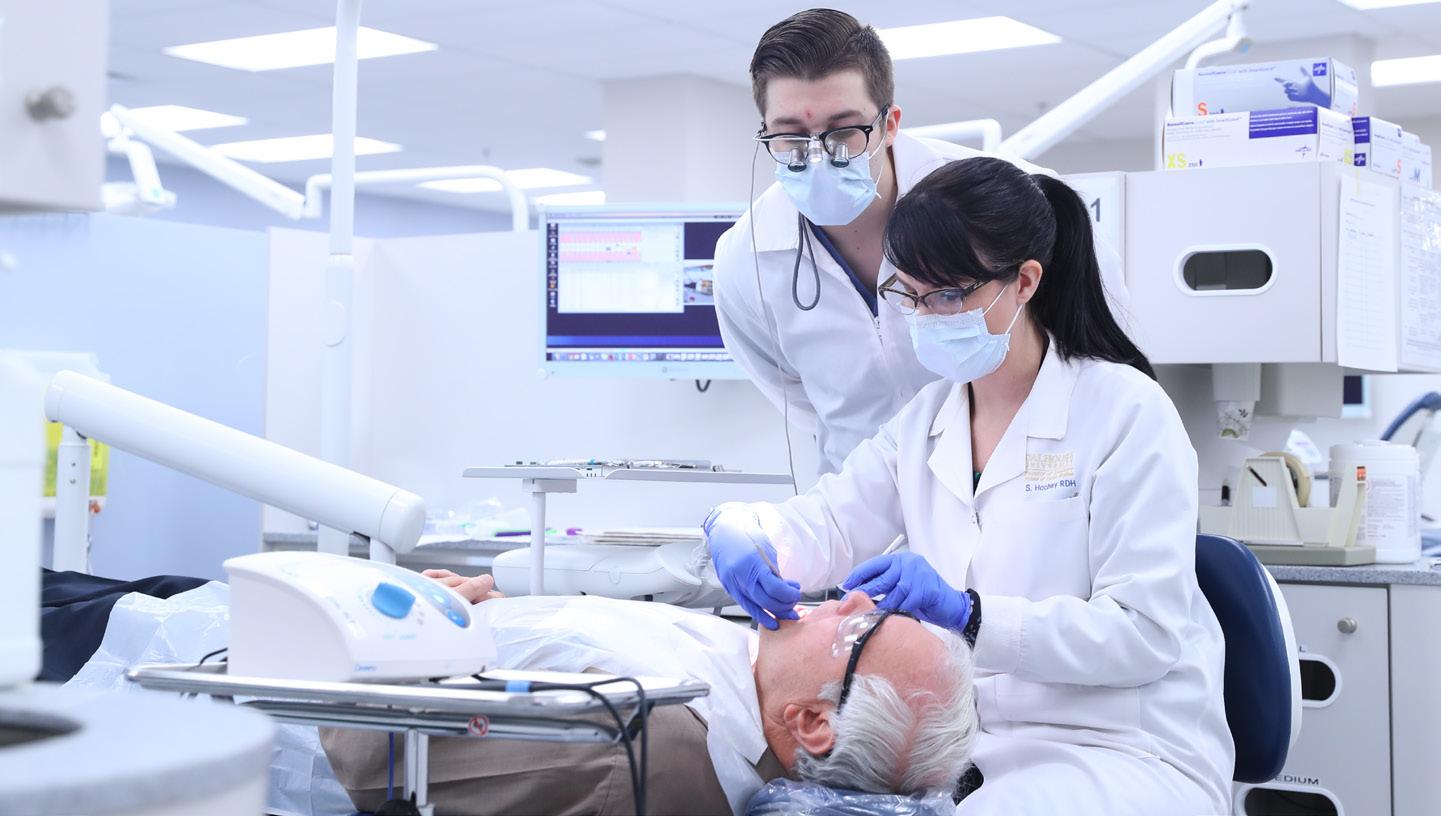
4 minute read
Alumni: Shauna Hachey
SHAUNA HACHEY A calling to help people
by Jane Doucet
When Shauna Hachey (DDH’04) was a high school student in Monastery, N.S. and thinking about university courses, she heard how competitive it was to get into dental hygiene programs and decided on speechlanguage pathology instead.
Growing up in a hard-working, blue-collar family, Shauna always knew she wanted to work in health care. “I felt a calling to help people,” she says. However, she didn’t want to do shift work, which ruled out medicine and nursing. In her first year of a BA degree at Mount Allison University in 2000, she took one linguistics course – and decided she had picked the wrong career path. “It just didn’t feel like a good fit for me,” she says.
After switching to science, Shauna applied to study dental hygiene at Dalhousie and John Abbott College in Quebec. “I got accepted to both,” she says, “but Dal seemed like the better fit, plus I was happy to stay in Nova Scotia.”
MAKING THE SWITCH
In September of 2002, Shauna started the dental hygiene diploma program. Leaving Mount Allison after just two years had been hard. “I loved my experience there, and I had made good friends,” she says. “But the practical side of me felt like it was the right thing to do, and it didn’t take long to make amazing friends at Dal.”
With a sister living in Halifax and a part-time waitressing job, Shauna soon settled into her new city and her classes, which were intense. “First year can make or break you,” she says, chuckling. “But I enjoyed it because it married my creativity and love of learning and the opportunity to apply knowledge in a hands-on way.”
Upon graduating in 2004, Shauna had her sights set on getting a job to pay back her student loans. “I never thought I’d return to Dal again!” she says. Over the next several years, she worked in a family practice, periodontics, orthodontics, and prosthodontics, enjoying the variety of experiences.
In 2011, Shauna returned to Dal for a year to earn a dental hygiene degree to “open more doors”, while still working one day a week. “I thought, once I have my degree, maybe I’ll do some clinical teaching,” she says. “I was 29 when I went back to school, and it was the best decision.”
Prof. Shauna Hachey instructs a student in the clinic.
INTRODUCED TO HEALTH POLICY
One course in particular resonated with Shauna: health policy. “When you see discrepancies in access to care because people can’t afford it or have difficulties accessing transportation, it’s an opportunity to find solutions to those problems,” she says. “I gravitated toward it.”
When she earned that degree in 2012, she jokes, “I didn’t leave Dal again.” She started working as a part-time clinical instructor, which she did for the next few years. As opportunities arose, she taught other courses, too. In 2015, a 50 percent teaching position came up for a clinical and course instructor, which she accepted.
“I was nervous when I started teaching,” says Shauna. “There’s something about the comfort and confidence of experience, which I didn’t have in those early days, but I loved it.” She didn’t stop studying, though; in 2017, she earned a master of health studies degree. Since then, she has focused her interests and initiatives on the integration of oral health into mainstream health care.
One project Shauna is particularly proud of focuses on the oral health of aging adults. She explains that plaque can contribute to aspiration pneumonia. “I’m hoping to make a small dent in this issue,” she says.
Shauna has recently received a research grant to explore the integration of a dental hygienist in long-term care. IMPROVED ORAL HEALTH FOR CHILDREN
The opportunity to contribute to the section on oral health in the One Chance to Be a Child report on the well-being of Nova Scotian children and youth, released in April 2022, was a highlight of Shauna’s career. “That report is incredibly holistic, and to have oral health included is a monumental step in the right direction.”
Another passion project is a communityled project by the Tui’kn partnership called Baby Smiles. An oral health children’s book will be sent home from the hospital with all new parents in Nova Scotia’s First Nations communities through the Read to Me program. Illustrated by Indigenous artist Loretta Gould and translated into Mi’kmaw, the book covers oral and overall health topics, such as the importance of water between meals, teething, toothbrushing, and first dental checkups.
Starting in Unama’ki (Cape Breton), the book will form part of a kit, which will also include a washcloth, a toothbrush for an adult and a child, a sippy cup, and a teething toy. “There are higher rates of pain in general among children in First Nations communities, including mouth pain,” says Shauna. “We hope this kit will be one step in reducing that pain.”
Shauna plans to spend the rest of her career looking for more opportunities to integrate oral health into mainstream healthcare. Today, the advice she gives to her students is a path she has followed herself: “Don’t limit yourself. Hard work, drive, and commitment does pay off, and you’ll find great gratitude in your work.”










